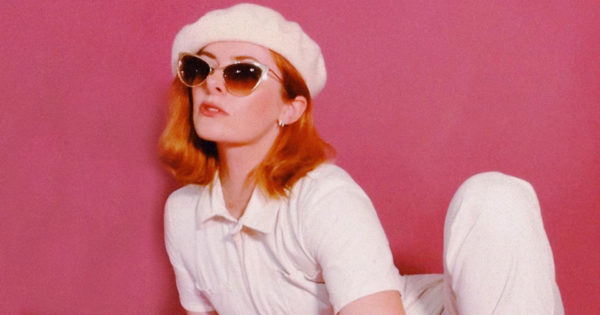When Sarah McCreanor, known professionally as Smac, walks onto a commercial set dominated by intricate props, high-end green screens and an intimidating collection of cameras, she is confident that the directors, producers and costume designers have no idea she can present any product to an attentive audience of 2.7 million just by logging onto TikTok.
“When I book a role, it’s because I’m a young woman with red hair, not because of who I am or my skill set necessarily,” she said. “Auditions are usually two minutes long, so there is really no time to share my personality and what I can do at all.”
McCreanor has risen to fame by creating satirical interpretations that capitalize on the internet’s obsession with watching things getting crushed in slow motion—she’ll dress in orange and move to the pace of a can of pureed pumpkin falling from grace, for example. But when she’s not curating both personal and sponsored content on social media, McCreanor spends a generous bulk of her time auditioning for commercials. In the past nine years, her acting and dancing skills have landed her roles in 70 different commercials across linear, streaming and digital platforms.
When directors tap A-list celebrities to star in commercials, they have nixed the traditional casting process and decided that banking on a famous face is a justifiable investment in brand clout. Agencies may instead go the route of on an open call, but in a digital climate where anyone with an internet connection can create their own fanbase, the junior actors who have seemingly yet to establish a notable platform could be making the majority of their income entertaining a loyal audience online. And when directors don’t properly vet these actors’ backgrounds, they’ve missed the opportunity to collaborate with talent who have mastered the art of both social media marketing and content creation—two prized skills in the eyes of any marketer.
Making the expensive look cheap
Using large budgets to shoot lo-fi content or conform to social media trends is nothing new—just look at this year’s Uber Eats’ Super Bowl ad—but marketers working tirelessly to align with internet culture is especially ironic when someone who has nailed that years ago is sitting on their set.
Janni Widerholm, social creative lead at TBWA and a TikTok creator herself, said that inviting hybrid actor-creator talent onto commercial sets, with the expectation that they will promote the campaign on their social channels, has become increasingly common. While some agencies are breaking down the silos between traditional ad campaigns and influencer marketing by recruiting creators—typically the Addison Raes of the world—for 360 campaigns that include both linear and social assets, inquiring into an auditioning actor’s background isn’t commonplace. According to Kirsten Rutherford, executive creative director at TBWA/Chiat/Day LA, casting directors tend to be most concerned with whether the auditioning actor has worked for a competitor in the past.
“As an actor, we are so involved yet so far removed from the entire production,” said McCreanor, who owns production studios in downtown Los Angeles and has created social media content for brands like Netflix, Levi’s and Warner Brothers. “It’s a great job that I’ll never turn down, but I do think you don’t need to spend $5 million dollars to do a TikTok dance on a TV commercial when it can go viral in five seconds on the internet.”
A slow-moving industry
While McCreanor leans on the commercial industry as a significant source of income and is grateful for the work, she is unafraid to critique its moments of extravagance, inefficiency and cultural oblivion. She remembers sitting in a dressing room for hours while crew debated on whether wearing a sandal with a short heel was too provocative, only for her feet to not be shown in the spot. In another case, a brand had a “huge panic attack on set” when she walked backwards, as the directors decided that her silhouette wasn’t appropriate for the commercial.
“I’ve never taken any of this personally, but there are so many conversations about details that no one cares about,” she said, adding that it would be nice to see Old Navy show viewers a midriff or experiment with a less boring hairstyle once in a while. “It sucks that brands think they have to be so incredibly safe and not take risks while the rest of the world is way ahead of them.”

Source link



